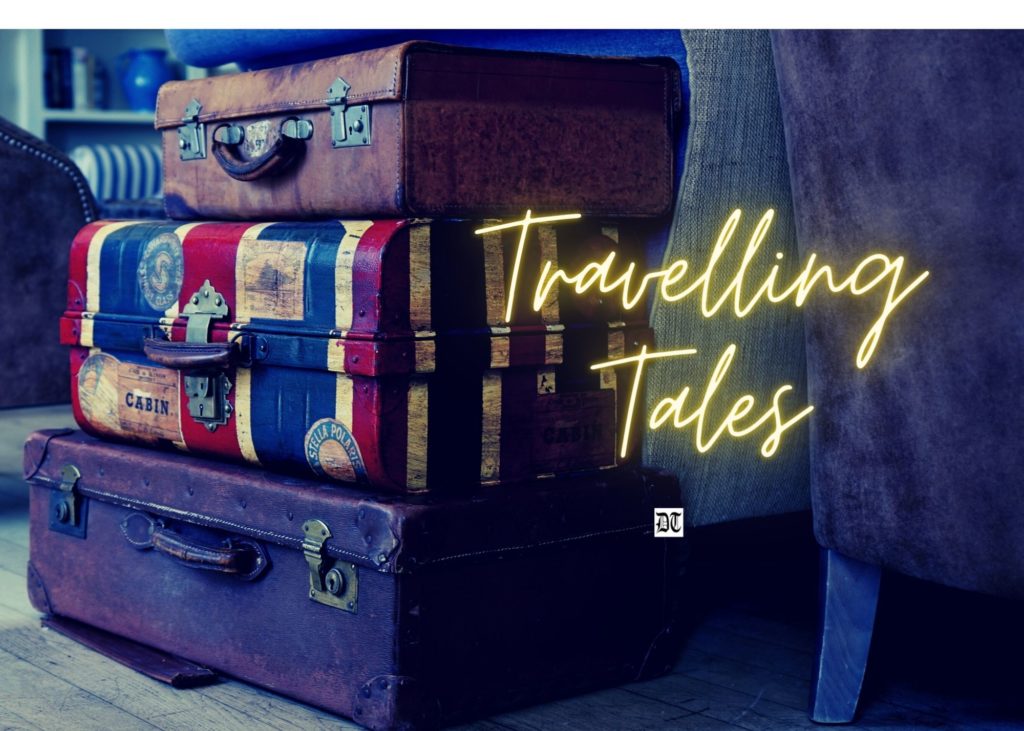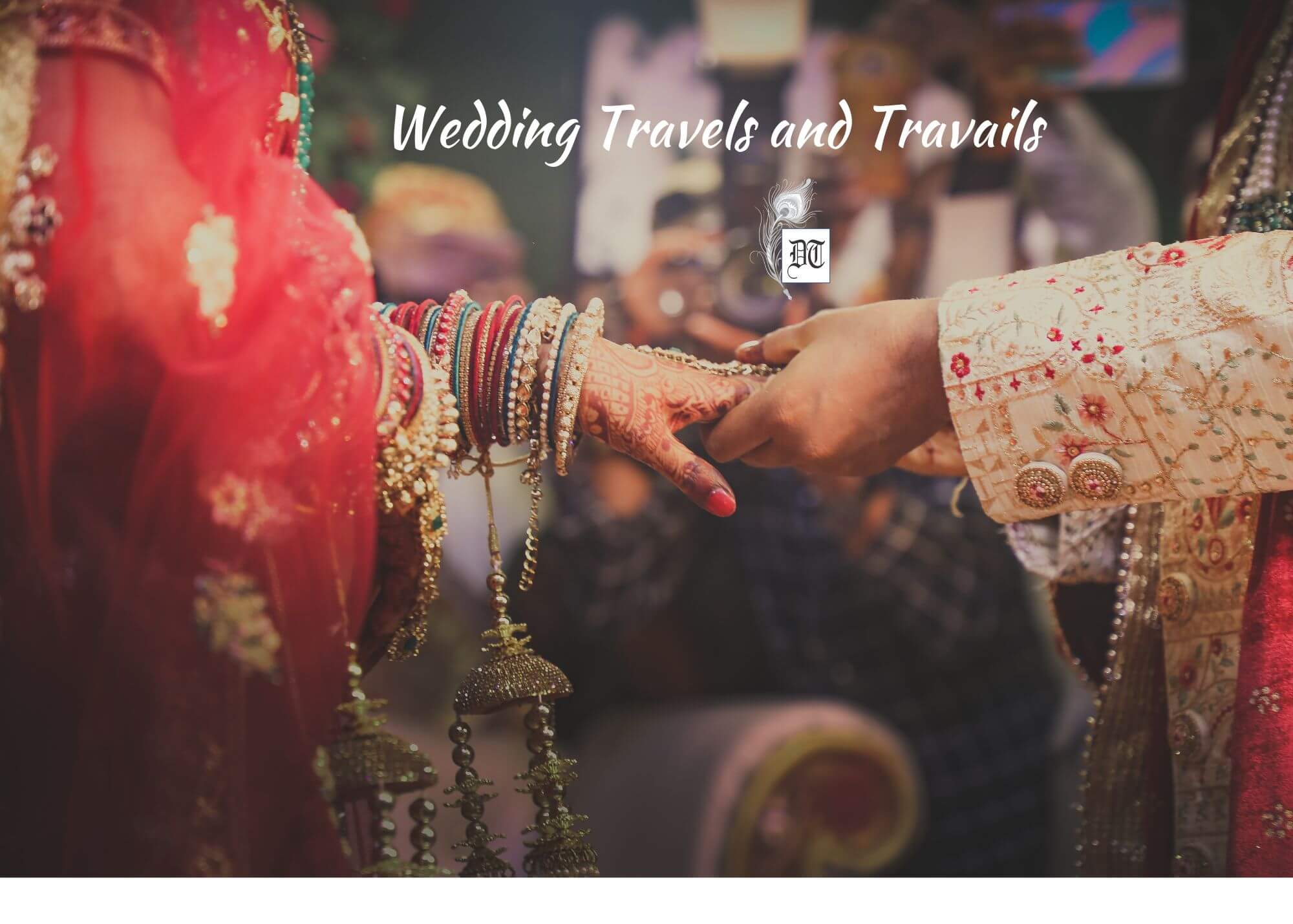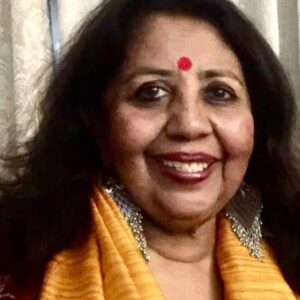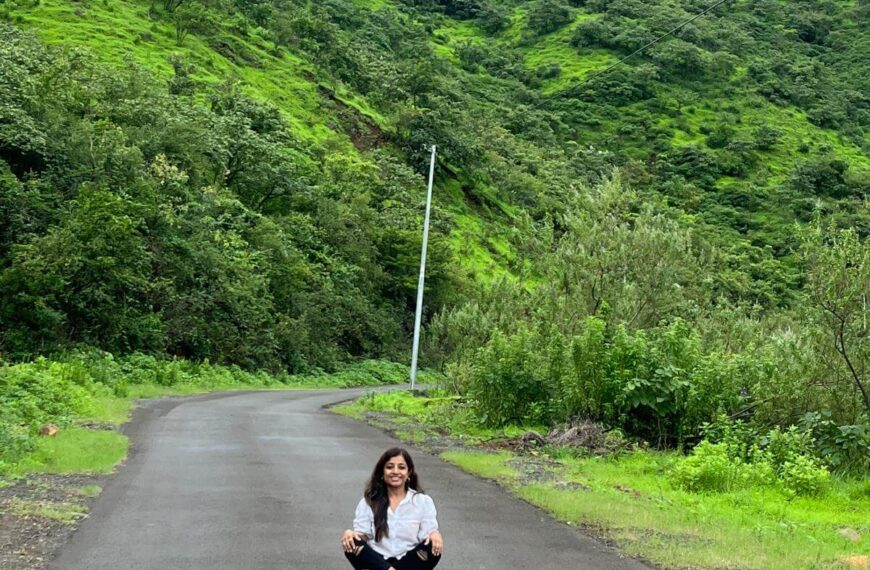Dr Roopali tells us about the big fat Indian weddings in two parts – exclusively for Different Truths.

Weddings in India have a season. The winter months make the Gods slip down from their heavenly mountain abodes to bless marriages. It is hectic travel time for us mortals too.
People rush from one city to another. From one village to another. From one country to another. In the bleak sand and salt desert of the Rann of Kutch in western India, noiseless baraat-wedding processions come across the India-Pakistan border in the dark of night, perform wedding rituals and slip back into the silent night.
Roads car-jammed, fully booked trains, and standby-only flights groan as hotels spill over with wedding guests and hosts. Shopping for the wedding also creates travel opportunities.
Silk sarees from Varanasi and Kancheepuram. Gold from Kerala and Kolkata. Voluminous lehenga skirts from Jaipur and various party favour confections from Alwar in Rajasthan. Destination weddings in Jaipur, Goa, Jaisalmer, and Thailand!
Just the other day, a friend’s son was getting married. Some wedding guests travelled from California, Ahmedabad, Mumbai, and Delhi.
The wedding venue was a banquet resort on the highway that rushes from Delhi to Meerut and beyond.
The wedding venue was a banquet resort on the highway that rushes from Delhi to Meerut and beyond. The road is dotted with massive wedding halls, restaurants and fun places. This one had a fancy name. It was bigger than Buckingham Palace, and the White House was assembled. Although the White House is intentionally surprisingly small!
We slow-marched with the baraat procession. The groom, an accountant, was dressed like a prince and sat on a horse-driven chariot. He carried a sword. Perched atop his chariot, with a sword at his waist, he frequently texted and attended office calls.
Phones, cameras, and camera phones flashed continuously. Like a UFO, a drone camera dipped and dived, taking pictures. We were careful not to curse.
A decorated jeep led the procession, blaring decibel-shattering dissonant and dated music.
We had to stop every few back-breaking yards from doing the bhangra dance. Young boys and girls danced to the tuneless tunes, and much cash was thrown into the air in appreciation.
The street urchins hired by the band guy set down their wedding procession lamps and ran to the wedding party to grovel.
The street urchins hired by the band guy set down their wedding procession lamps and ran to the wedding party to grovel. As a kid, I had seen this happen at weddings. Nothing seemed to have changed.
The old snake-charmer tunes from the film Nagin brought back old memories. I returned to weddings in the narrow lanes of Kacchi Chavni Chowk in Jammu Tawi in the Himalayan foothills.
Jammu is where I spent a part of my delightful childhood. Weddings and funerals were community affairs. They took place around us in the congested lanes and by-lanes that led up to massive doors, which opened into people’s courtyards. Everybody went to see the baraat.
Feast and hospitality at weddings were only for the groom’s procession. They were the guests. The neighbours were important, too, as authentic witnesses to the festivities.
We always squeezed ourselves between adult legs and dancing bodies for a ringside view. The groom’s wedding procession usually travelled from a neighbouring village or town. Sometimes even further away.
The moment they entered the mouth of the lane to the bride’s home, they would start dancing.
Accompanied by the “Ghori, Gas Band” – a horse, gaslit lamps and a loud brass band coupled with the rackety beating of the dholak drum. There was always so much excitement!
Petromax lamps lit the way. Prime relatives of both families hugged and exchanged money, gifts, and sweets. Only then would they make their entrance.
The bride, accompanied by her friends and female relatives, would receive her groom at the door with a garland of marigold flowers. Most times, we managed to push past some busy adults. We would join the brides’ sisters in poking the groom with safety pins or pinching him. Shoe-stealing was the highlight of torturing the groom. It was all fun — a kind of ice-breaking game. Our giggling would not stop.
A floral veil called sehra covered the groom’s face. This kept the evil eye away.
A floral veil called sehra covered the groom’s face. This kept the evil eye away. A garland of currency notes hung from his neck. He sat astride a nearly dead white horse. A small kid called sarbala rode with the groom. The horse ride was just a short one. They would arrive in a rickety bus rented by the bride’s father.
The sarbala is like a Best Man. The tradition goes back to times when marriage processions met with highway robbers. Sometimes a besotted groom even arranged for the bride to be “kidnapped” from a neighbouring village.
That is when the best man saved the family’s honour by fighting off the bride’s relatives. In the worst-case scenario, he was the stand-in bridegroom.
Mother said women do not accompany the marriage procession. Looters and highway robbers keep them confined at home. They prepared for the return and reception of the wedding procession accompanied by the bride.
This journey, too, was fraught with danger.
This journey, too, was fraught with danger. Jewels and dowry items, including cash and silver utensils, had to be returned. Highwaymen waited with eager breath to rob and kill. Food was served only to the baraat—that way; wedding expenses were curtailed.
You were expected to attend with family and friends. Not partake of the wedding feast.
Batasha, a sugar-sweet, is distributed to all. “Mooh meetha”, they call it. We are sweetening the mouth. Sweet for a happy occasion, sweet-tongued, no foul language. It stopped the stinky mouth smell from alcohol, tobacco or rotting gums.
We loved the Jai Mala and the Doli, which departed with the crying, screaming bride. She was leaving her family and her childhood behind. She was advised never to leave her husband’s home except as a dead body.
She would now travel many miles in a decorated box-like contraption carried by four palki (palanquin) bearers. If confronted by highway robbers, they would abandon the Doli and run for their lives.
To be continued
Picture design by Anumita Roy






 By
By

 By
By